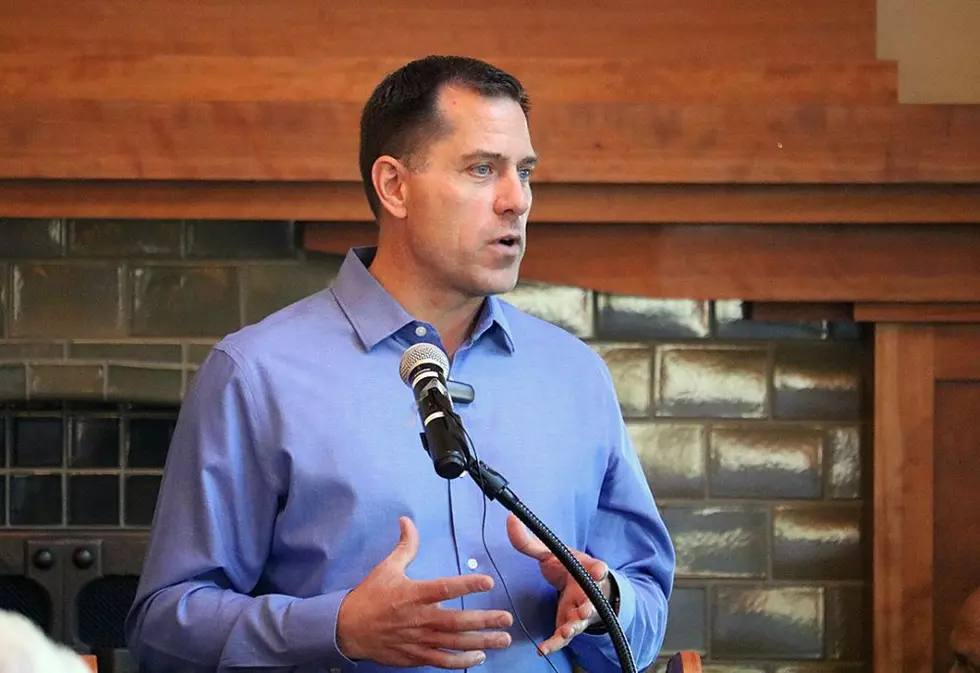
Day three on the job, MEP director details organization’s future economic goals
When Grant Kier arrived in Missoula with his wife and daughter, he spent more than a year looking for work, never mind his advanced degree and experience as an engineer and geologist.
On Wednesday, his third day on the job as the new director of Missoula Economic Partnership, the frustrations born from that experience haven't left him. They now play a prominent role in MEP's future as it looks to move Missoula's economic dial.
“I saw firsthand what it felt like to be an overqualified employee in our marketplace,” Kier said. “I know what it feels like to have ambitions about what I wanted to do with my talents, and how I wanted to give back to my community, and feeling like I wasn't able to achieve my own potential because of the very few job opportunities that existed here.”
Kier, who shared his story with members of the Missoula Senior Forum on Wednesday, knows others have experienced similar frustrations. It strikes to the heart of what MEP looks to achieve as it begins a new chapter under Kier's leadership.
Over the next five years, Kier said, the organization aims to create 3,000 jobs that pay more than the median wage, translating to $160 million in additional income. When those workers spend those earnings in Missoula, the impact grows to $525 million.
“Fundamentally, what this organization is about is making sure we take the incredible people we have here and give them every opportunity to put their talents and strengths to work to make this community stronger, and this economy stronger,” Kier said.
Kier formerly served as executive director of the Five Valleys Land Trust, a position he left earlier this year to enter Montana's Democratic primary for Congress. In taking the job at MEP, he replaced former CEO James Grunke, who left to pursue other opportunities.
With Kier now in place, MEP looks to raise the local median wage through focused job creation, and to develop a community brand. It also looks to fill a shortage of skilled workers through a closer partnership with the University of Montana.
“We see tremendous employment opportunities and employers saying they don't have enough workforce in key areas to grow fast enough, given their potential to grow,” Kier said. “For us, it's about being that bridge between the academic world and the business community to figure out how we respond to the needs of the business sector through academic opportunities.”
Jeff Fee, who served as MEP's interim director after Grunke's departure, cited the arrival of ClassPass as a recent economic success. While a number of people had a hand in convincing the international tech company to choose Missoula over rival cities, Fee said MEP played prominently in the equation.
The company's initial hiring plan was capped at 50, though it has since expanded to 200. Fee attributes that to Missoula's strong pool of applicants and the city's educated workforce.
“Those are good-paying tech jobs that have a low impact on our environment,” Fee said. “It's just an example of one of the areas we focus on as an organization. Tech is great for students coming out of the university. It's very complementary to the culture of Missoula.”
Fee also draws on past experience when looking at MEP's future and Missoula's own economic potential. When he left Chattanooga, Tennessee, for Missoula nearly 30 years ago, his former hometown lacked opportunity.
That changed when community leaders sought change through intentional economic development. Chattanooga eventually landed a Volkswagen manufacturing facility, even as automakers were cutting back in other cities, including Detroit.
“It illustrates the fact that if you are deliberate in what you're doing and get the right people around the table, you can actually define what your community looks like 15, 20 or 30 years down the road,” Fee said, adding that Missoula wasn't unlike Chattanooga when he arrived.
“When I first came to Missoula and started talking about economic development, it was almost a dirty word,” he said. “It wasn't until 2008 with the closure of the Stimson Lumber mill and the subsequent closure of Smurfit that people began realizing that we needed to do something different.”
That intentional focus on economic development has begun to pay off, and it doesn't need to pit one community goal against another, Fee said.
“When you think about land conservation and economic development, those two things can seemingly be at odds,” he said. “(Kier) was very instrumental in helping us as an organization develop policies and an overall philosophy around conservation and economic development. They're highly complementary in the nature of the community we have.”
And that could help brand Missoula to the outside world as MEP looks to recruit new businesses.
“If you look at those communities that are successful in economic growth, they capture the spirit of their community and tell that story clearly,” Kier said. “In doing so, they attract people who want to be part of that story. We're trying to define and promote who we are as Missoulians broadly outside of Missoula.”
